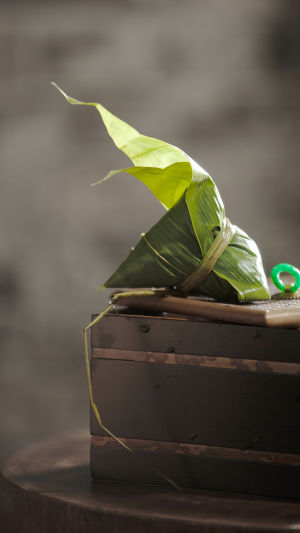Sticky rice dumpling is a traditional Chinese delicacy with a long history and rich cultural heritage.
It is a food made with glutinous rice as the main raw material, usually wrapped in bamboo leaves or other plant leaves, and steamed or boiled.
Sticky rice dumpling is known around the world for its unique shape and texture, as well as its deep association with the Dragon Boat Festival.
History of Sticky rice dumplings
Qu Yuan and the Dragon Boat Festival
Legend has it that around 278 BC, during the Warring States period in China, a minister of Chu State was a loyal minister and patriot.
During his exile, he missed his country very much and finally committed to jumping into the river on the fifth day of May to show his loyalty to the country. When local residents heard of his death, they rowed down to search for his body, but to no avail.
In order to prevent fish and insects from biting his body, people began to wrap glutinous rice in bamboo leaves and throw it into the river to raise fish and insects. This is the origin of the Sticky rice dumpling.
Since then, every year on the fifth day of May, people began to make Sticky rice dumplings to commemorate him and hoped to avoid bad luck by eating Sticky rice dumplings. This tradition gradually evolved into the current Dragon Boat Festival, also known as the Sticky Rice Dumpling Festival.
How to make Sticky rice dumplings
1. Material preparation:
The main raw material is glutinous rice. Glutinous rice needs to be soaked for several hours in advance and then drained.
Bamboo leaves or other plant leaves suitable for wrapping need to be prepared in advance, washed, and scalded with hot water to remove odors and impurities.
Fillings can be meat, egg yolk, beans, candied dates, mushrooms, etc., according to personal taste.
2. Package:
Take a piece of bamboo leaf, put some glutinous rice in the middle, and add an appropriate amount of filling.
Wrap the bamboo leaves into a triangle or rectangle and tie them tightly with string or cotton thread to make sure they won't unravel.
3. Cooking:
Sticky rice dumplings can be cooked by boiling, or steaming. The most common way is by steaming, where the rice dumplings are placed in a large pot, filled with enough water, and then simmered for several hours until the glutinous rice is soft.
After cooking, Sticky rice dumplings can be eaten or preserved.
3. Taste and Variation of Sticky rice dumpling
1. Meat Sticky rice dumplings: This is one of the most common types of Sticky rice dumplings. The fillings usually include shiitake mushrooms, salted egg yolk, and glutinous rice. After steaming, the meat dumplings have a strong aroma and a salty taste.
2. Sweet Sticky rice dumpling: The fillings of sweet Sticky rice dumpling usually include red bean paste, candied dates, glutinous rice and some sugar, This kind of Sticky rice dumpling has a sweet taste and is a common dessert.
3. Salty rice dumplings: The fillings of salty rice dumplings can include salted egg yolk, glutinous rice, and some salty seasonings. They have a salty and fragrant taste and are suitable as a staple food.
4. Nut Sticky rice dumpling: The fillings of Nut Sticky rice dumpling usually include walnut kernels, almonds, and glutinous rice, and this Sticky rice dumpling has a nutty and crunchy texture.
In a word, Sticky rice dumpling is a part of Chinese traditional culture with a rich history, various tastes, and profound cultural connotations.
Whether celebrated during the Dragon Boat Festival or enjoyed on weekdays, Sticky rice dumplings represent an important symbol of family reunion and cultural inheritance. No matter the taste, Sticky rice dumpling is a delicious food that is worth savoring and cherishing.





